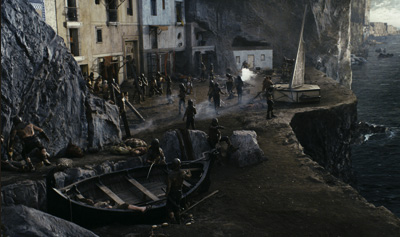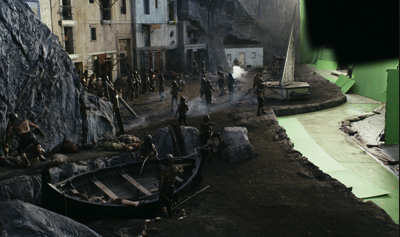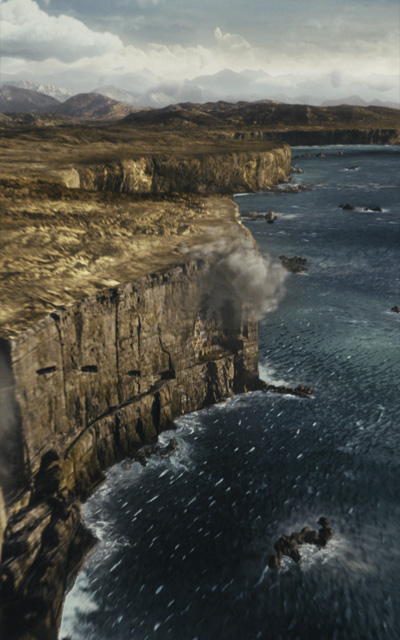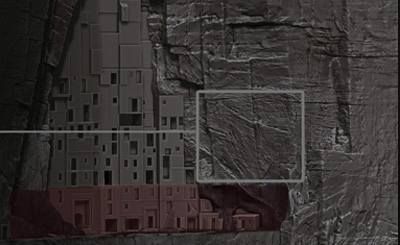Interview with Gustavo Yamin, Senior Digital Artist
See additional info about Gus on his crew profile.
How did the company become involved with Immortals?
Over the years Image Engine had developed a good working relationship with Raymond Gieringer, the production VFX supervisor. Most recently Raymond, Shawn Walsh (Visual Effects Executive Producer at Image Engine) and Simon Hughes (Visual Effects Supervisor) had worked together on Law Abiding Citizen, which lead to the company being approached to work on Immortals. Tarsem Singh, the director, was also apparently a fan of District 9.
Work began in 2010, when Hughes provided on-set supervision in Montréal and entailed well over a year of dedication from the Image Engine crew.
The project represents the largest digital environment build to have taken place at Image Engine to date.
What parts of the movie did you work on and where was ZBrush used in them?
I was involved in the early stages of conceptualizing and planning the execution of a massive set extension, which bridges three separately built sets that make up a large cliff wall facing an ocean.
After working on the cliff build, I handled the lighting and rendering for a good number of the shots that included it, as well as other smaller 3D tasks for the shots Image Engine worked on.
We used ZBrush on this environment build and in a CG hawk that is featured in some shots throughout the movie.


Going into the project, what did you see as the greatest challenge? Did that prove to be accurate?
Our biggest challenge from the beginning was the digital environments - specifically the huge cliff-face that dominates a good portion of the story line. It was a multi-faceted challenge that consumed over six months of planning, setup, ZBrush sculpting, rendering, matte painting and compositing.

How much of what we saw in these locations was set and how much was added via green screen?
The cliff is a unique setting. The section in question spans roughly half a kilometer and joins together three distinct sets that were built separately in a sound stage in Montreal.
Work began in 2010, when Hughes provided on-set supervision in Montréal and entailed well over a year of dedication from the Image Engine crew.
The project represents the largest digital environment build to have taken place at Image Engine to date.
What was the overall process for filming and adding in the extensions?
Film Production used a special setup that would allow the director to shoot these sets against green screens and immediately composite the image over a rudimentary 3D model of the cliff. This had the effect of placing the real set in proper visual context on the face of the virtual cliff. In this way, Tarsem could choose angles that would frame the real set and the rest of the cliff as it should be seen from each of the three key locations.
This 3D model was sent to Image Engine, along with photos of the rock faces built on-set. Our task was to build a 3D environment that would join all three locations, adding a seamless background and geographical continuity to the shots filmed in the separate sound stages. We decided it would be accomplished with a mix of 3D building and digital matte painting.

© 2011 War of Gods, LLC. All Rights Reserved.






